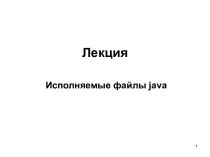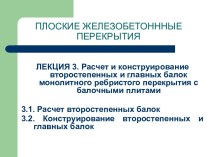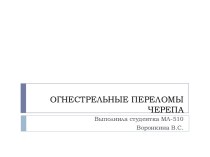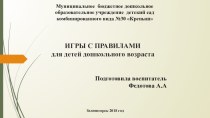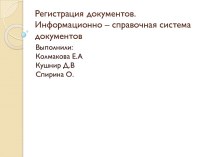- Главная
- Разное
- Бизнес и предпринимательство
- Образование
- Развлечения
- Государство
- Спорт
- Графика
- Культурология
- Еда и кулинария
- Лингвистика
- Религиоведение
- Черчение
- Физкультура
- ИЗО
- Психология
- Социология
- Английский язык
- Астрономия
- Алгебра
- Биология
- География
- Геометрия
- Детские презентации
- Информатика
- История
- Литература
- Маркетинг
- Математика
- Медицина
- Менеджмент
- Музыка
- МХК
- Немецкий язык
- ОБЖ
- Обществознание
- Окружающий мир
- Педагогика
- Русский язык
- Технология
- Физика
- Философия
- Химия
- Шаблоны, картинки для презентаций
- Экология
- Экономика
- Юриспруденция
Что такое findslide.org?
FindSlide.org - это сайт презентаций, докладов, шаблонов в формате PowerPoint.
Обратная связь
Email: Нажмите что бы посмотреть
Презентация на тему European monetary law
Содержание
- 2. European monetary law Art. 2, Treaty on European
- 3. European monetary lawAlso specify the principle of
- 4. European monetary lawBasis of "economic" EMU component
- 5. European monetary law The "currency" EMU component
- 6. European Central Bank The European System of
- 7. The existence of this system is an
- 8. The structure of the harmonized price index for consumer goods in the euro area,%.
- 9. StructureThe statutes of the ESCB and the
- 10. The main governing body - the Governing
- 11. Decision makingSimple or qualified (2/3) majority,"weighted" voting
- 12. ECB can do normal operations for central
- 14. Official reserve assets of the ECB
- 15. Gold reserves of the ECB
- 16. ECB's monetary reserves
- 17. European monetary lawA single currency is issued
- 18. European monetary lawUniform interest rates Transaction costs
- 19. European monetary law In order to move to
- 20. +Euro is a symbol of European identity
- 21. European monetary lawEMU also required harmonization of
- 22. European monetary lawEU banking law is a
- 23. European monetary lawThe main source of EU
- 24. European monetary lawRequirement for compulsory licensing of
- 25. European monetary lawStability and Growth Pact (SGP)17
- 26. European monetary lawThe original SGP said that
- 27. European monetary lawIn 2006, Germany's public debt
- 28. European monetary law+Discourages governments from borrowing money
- 29. European monetary lawEuropean Financial Stabilisation Mechanism (EFSM)Under
- 30. European monetary lawOn 8 October 2012, a
- 31. European monetary lawThe ESM will issue bonds
- 33. Скачать презентацию
- 34. Похожие презентации
European monetary law Art. 2, Treaty on European Union, the goal of EU: “promote economic and social progress ... by creating an economic and monetary union, ultimately including a single currency in accordance with the provisions of
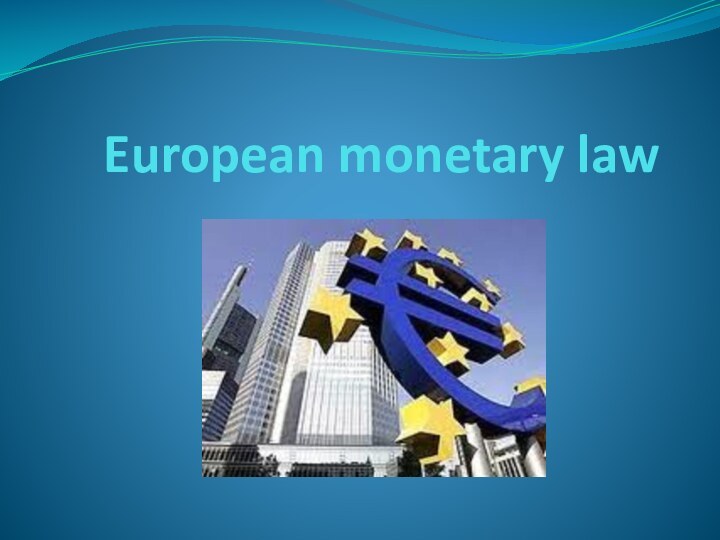


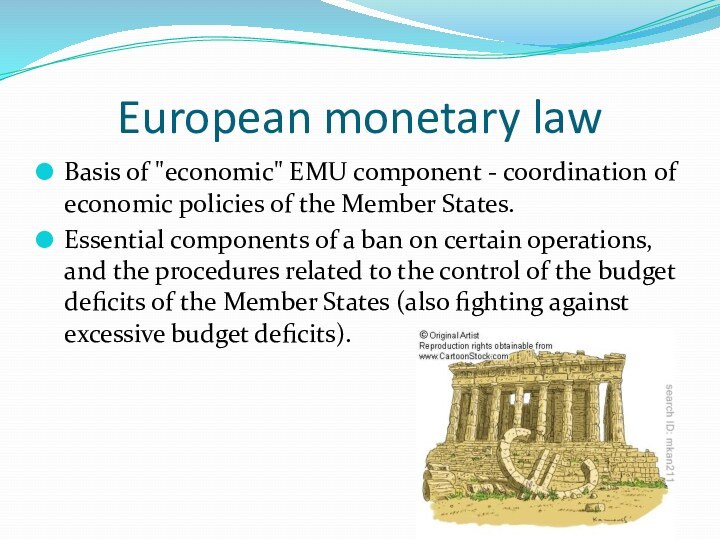

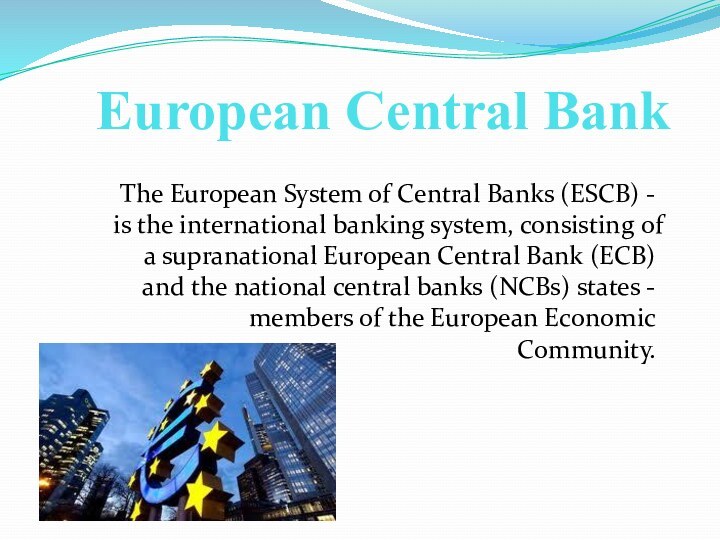


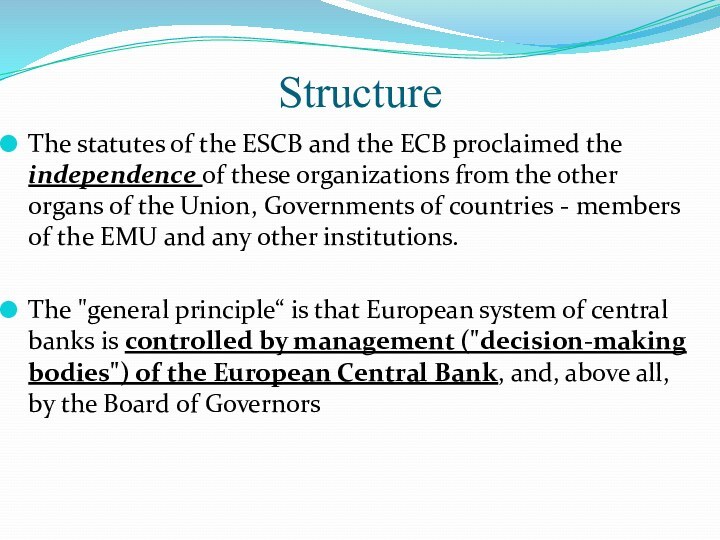
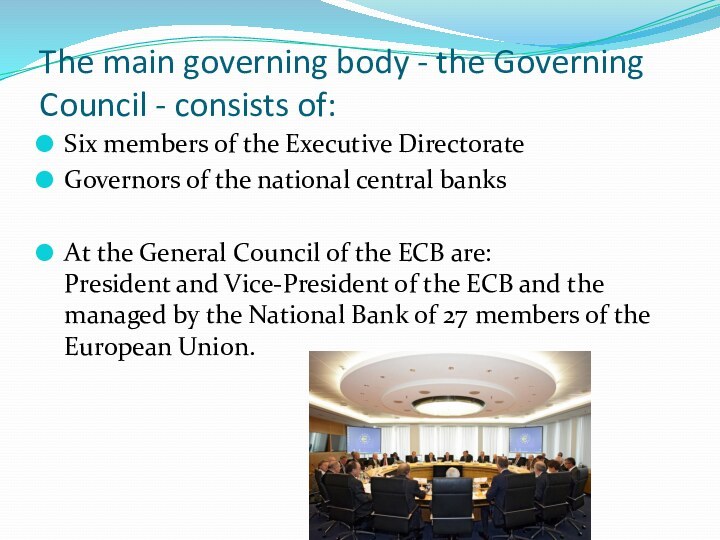
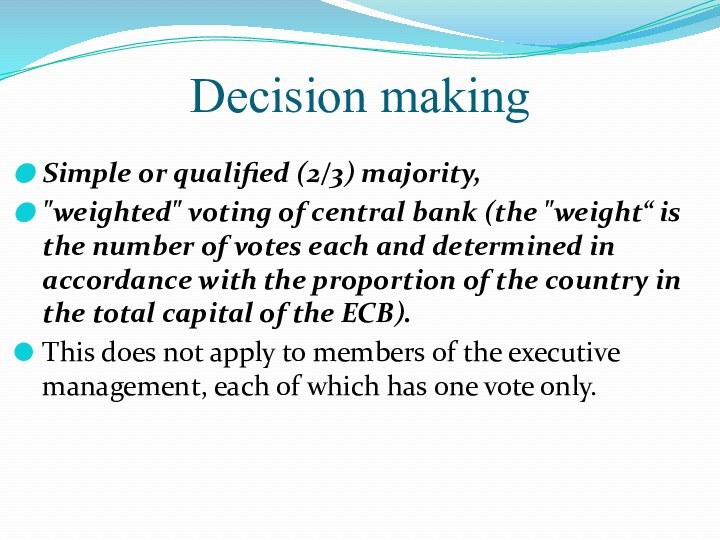
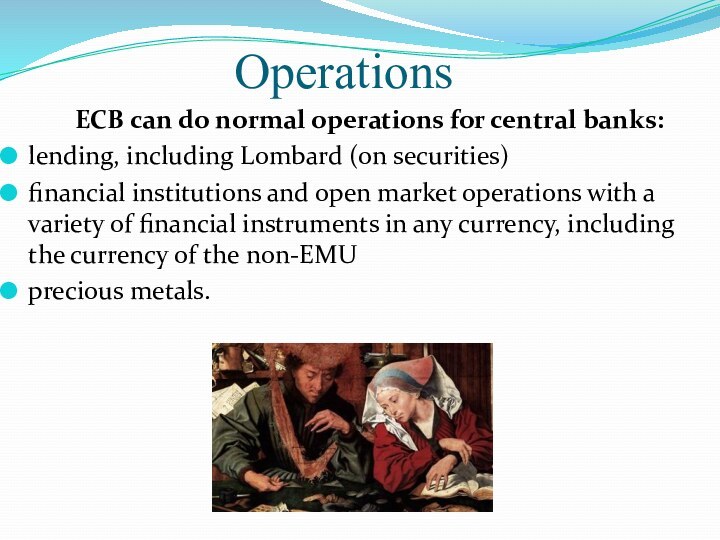
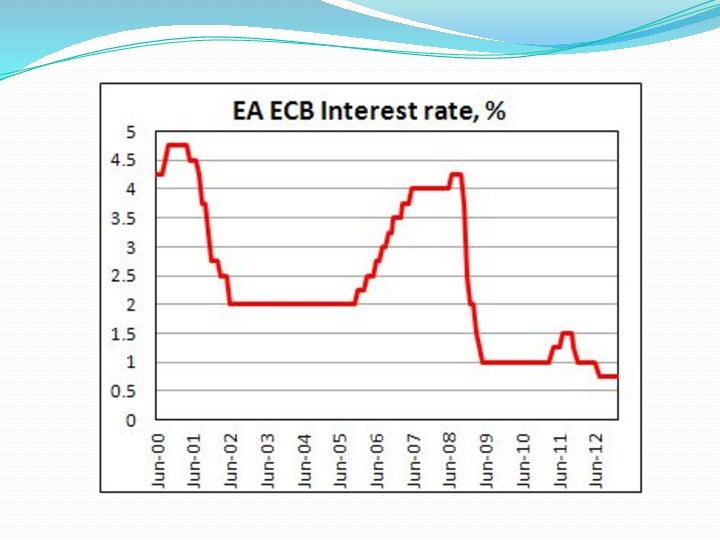
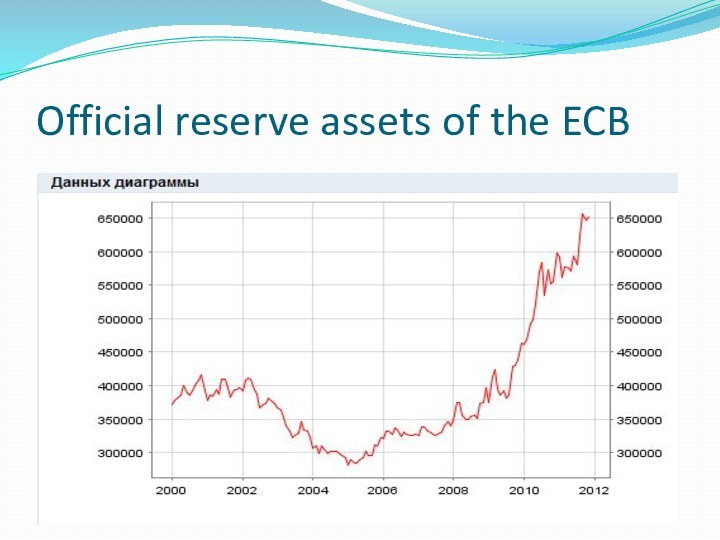

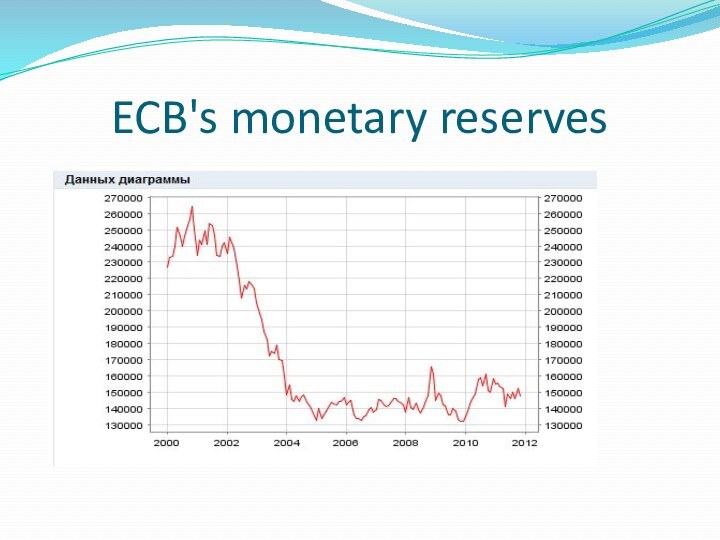

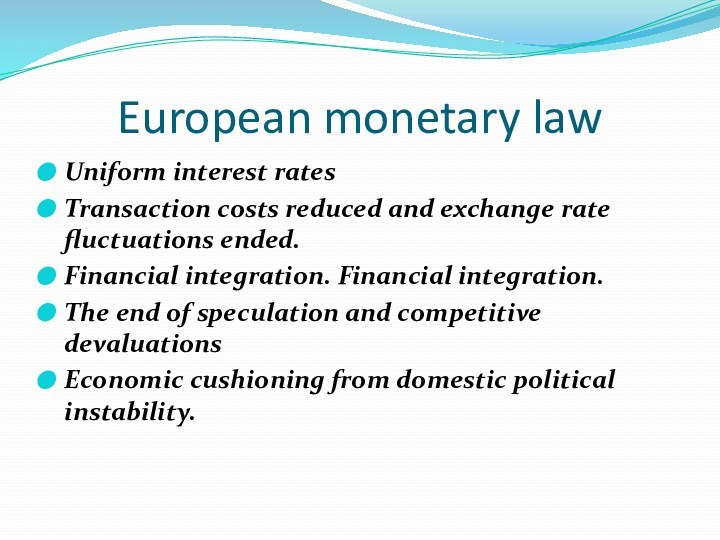

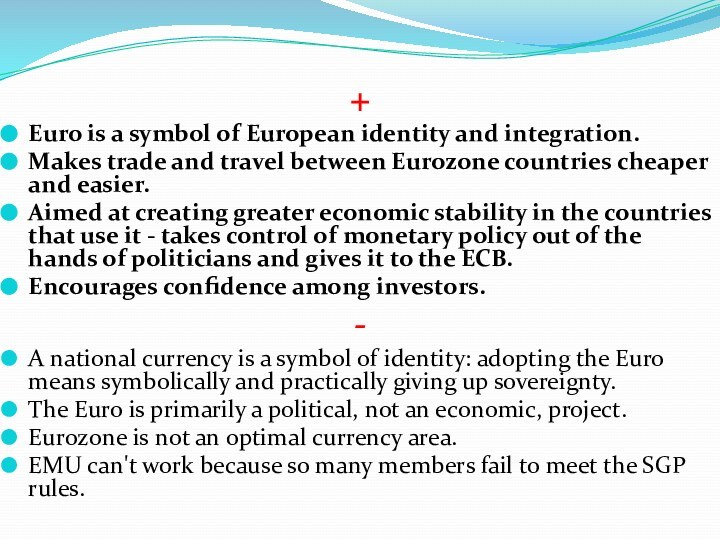
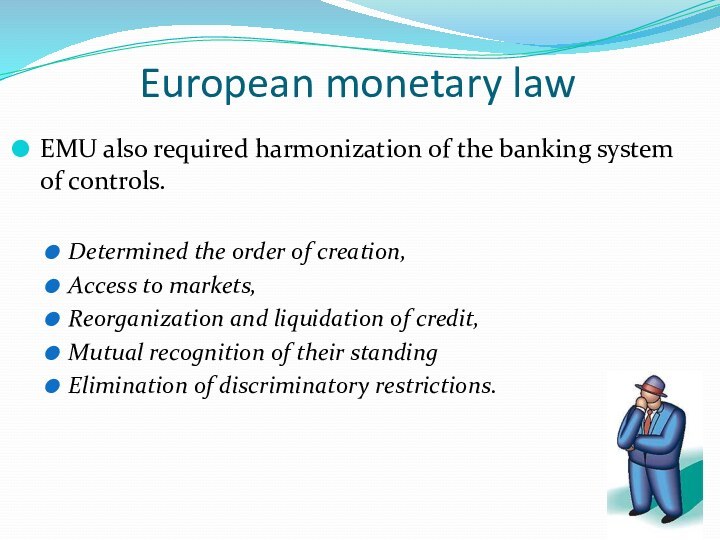

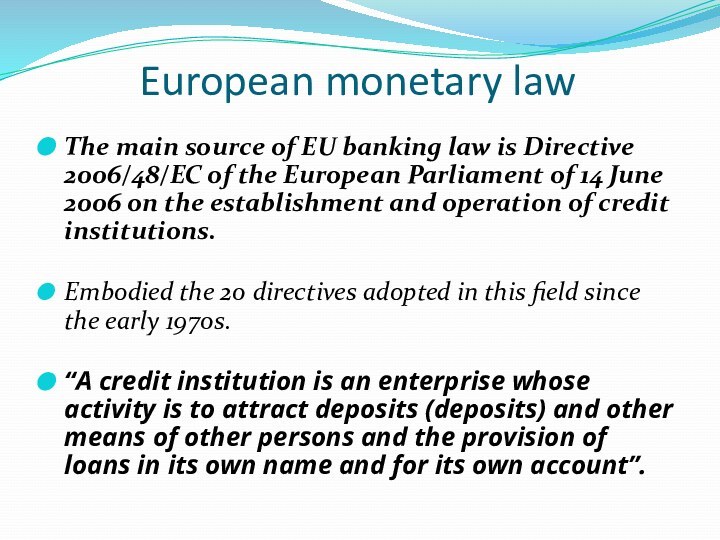
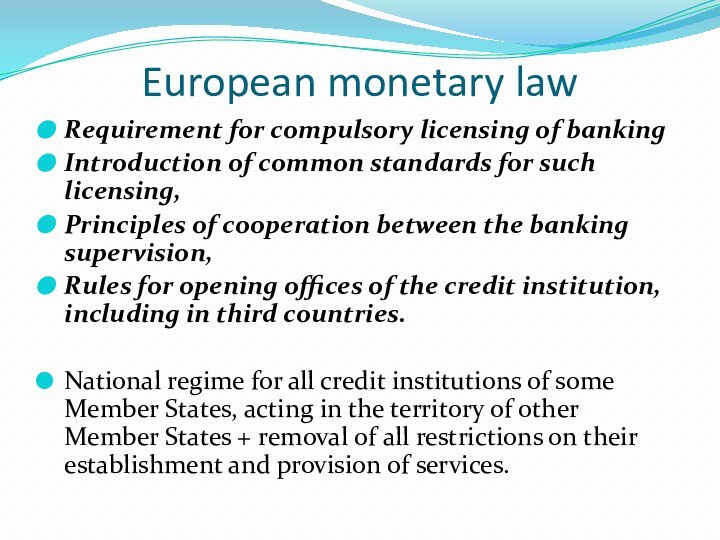


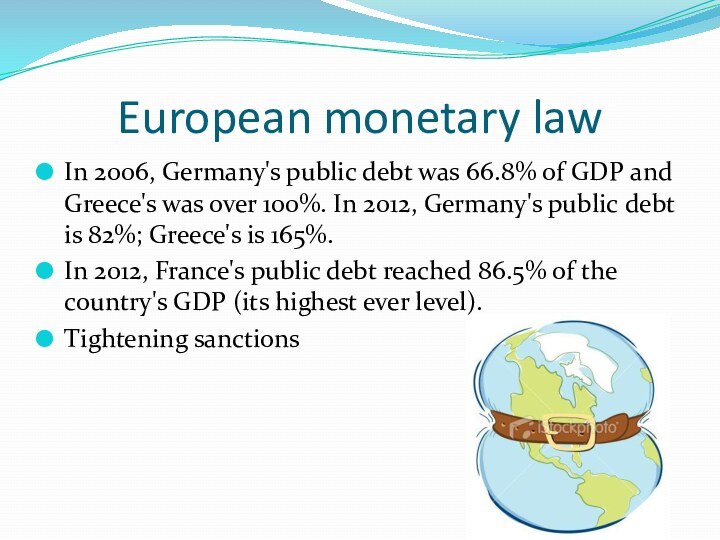
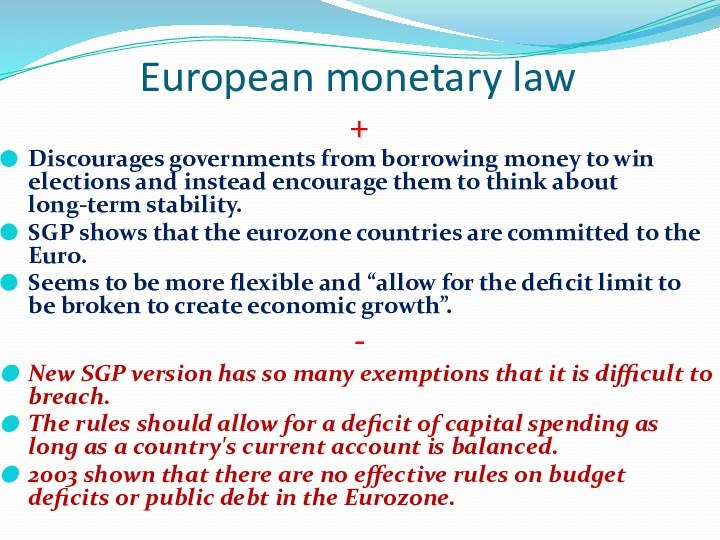
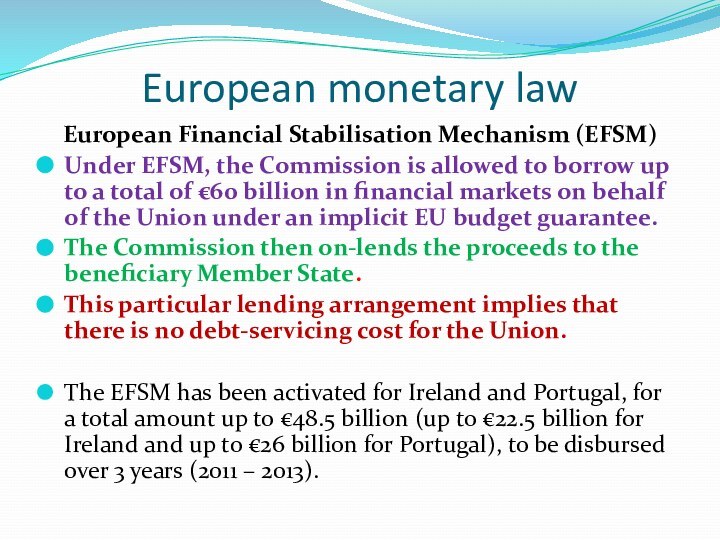

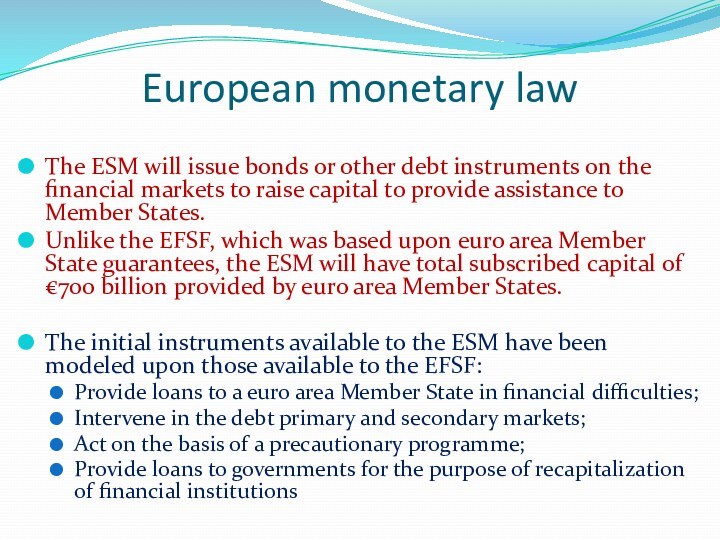
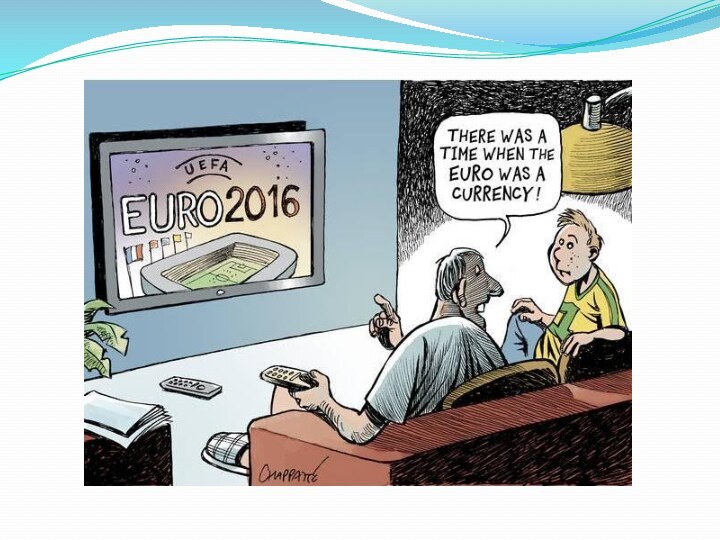
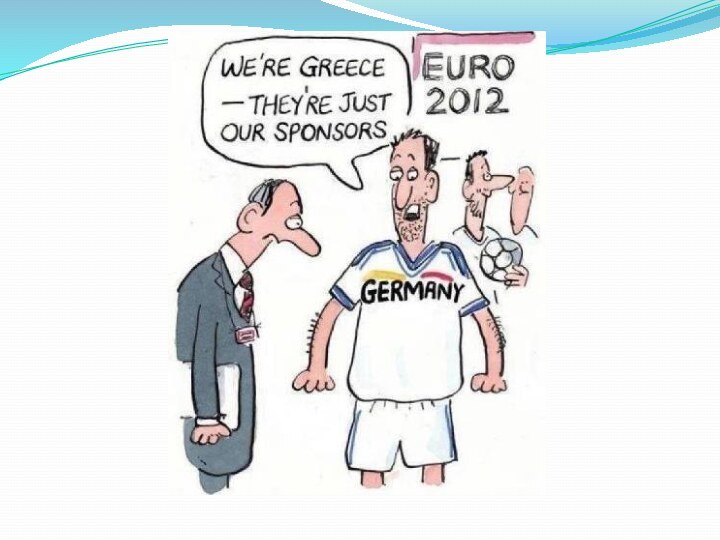
Слайд 2
European monetary law
Art. 2, Treaty on European Union,
the goal of EU:
... by creating an economic and monetary union, ultimately including a single currency in accordance with the provisions of this Treaty."
Слайд 3
European monetary law
Also specify the principle of a
free market economy with free competition, which should guide
the economic policy of the Community.These three foundations: 1) Close coordination of the economic policies of the Member States; 2) Internal market; 3) Identification of common goals.
Слайд 4
European monetary law
Basis of "economic" EMU component -
coordination of economic policies of the Member States.
Essential
components of a ban on certain operations, and the procedures related to the control of the budget deficits of the Member States (also fighting against excessive budget deficits).
Слайд 5
European monetary law
The "currency" EMU component -
single monetary policy of the Community, which is based
on a single currency - the euro and the single institutional framework designed for the single monetary policy:European System of Central Banks (ESCB)
Economic and Financial Committee (EPA)
Aim – price stability.
Слайд 6
European Central Bank
The European System of Central
Banks (ESCB) - is the international banking system, consisting
of a supranational European Central Bank (ECB) and the national central banks (NCBs) states - members of the European Economic Community.Слайд 7 The existence of this system is an integral
part of the European Economic and Monetary Union.
National central
banks of the UK, Denmark, Greece and Sweden are members of the European System of Central Banks with special status: they are not allowed to participate in decisions regarding the execution of the single monetary policy for the "euro zone" and implement such decisions.European monetary law
Слайд 9
Structure
The statutes of the ESCB and the ECB
proclaimed the independence of these organizations from the other
organs of the Union, Governments of countries - members of the EMU and any other institutions.The "general principle“ is that European system of central banks is controlled by management ("decision-making bodies") of the European Central Bank, and, above all, by the Board of Governors
Слайд 10 The main governing body - the Governing Council
- consists of:
Six members of the Executive Directorate
Governors of
the national central banks At the General Council of the ECB are: President and Vice-President of the ECB and the managed by the National Bank of 27 members of the European Union.
Слайд 11
Decision making
Simple or qualified (2/3) majority,
"weighted" voting of
central bank (the "weight“ is the number of votes
each and determined in accordance with the proportion of the country in the total capital of the ECB).This does not apply to members of the executive management, each of which has one vote only.
Слайд 12 ECB can do normal operations for central banks:
lending, including Lombard (on securities)
financial institutions and open market
operations with a variety of financial instruments in any currency, including the currency of the non-EMUprecious metals.
Operations
Слайд 17
European monetary law
A single currency is issued by
the ECB. The Member States that adopted the euro,
converted their currency based on irreversibly fixed exchange rates that were determined by Council Regulation N 2866/98/ES.In accordance with Council Regulation N 1103/97/ES and "private" and "official" ECU has been converted into euro at the rate of one to one, and all references to the ECU is now considered to be references to the euro.
Слайд 18
European monetary law
Uniform interest rates
Transaction costs reduced
and exchange rate fluctuations ended.
Financial integration. Financial integration.
The end of speculation and competitive devaluations
Economic cushioning from domestic political instability.
Слайд 19
European monetary law
In order to move to a
single currency, the Member States must meet four criteria
of convergence in the EC Treaty and in a special ProtocolHigh level of price stability - long-term average rate of inflation does not exceed by more than 1.5% of the same rate in the three Member States.
No excessive deficit.
Normal participation in the exchange rate mechanism (IOC) for the last two years. No devaluation.
An average nominal value of long-term interest rate that does not exceed by more than 2% this same rate in states with the highest level of price stability.
Слайд 20
+
Euro is a symbol of European identity and
integration.
Makes trade and travel between Eurozone countries cheaper
and easier.Aimed at creating greater economic stability in the countries that use it - takes control of monetary policy out of the hands of politicians and gives it to the ECB.
Encourages confidence among investors.
-
A national currency is a symbol of identity: adopting the Euro means symbolically and practically giving up sovereignty.
The Euro is primarily a political, not an economic, project.
Eurozone is not an optimal currency area.
EMU can't work because so many members fail to meet the SGP rules.
Слайд 21
European monetary law
EMU also required harmonization of the
banking system of controls.
Determined the order of creation,
Access
to markets, Reorganization and liquidation of credit,
Mutual recognition of their standing
Elimination of discriminatory restrictions.
Слайд 22
European monetary law
EU banking law is a branch
of the European Union, the rules which govern the
relationship in banking services related to the creation, operation and liquidation of credit institutions and determining the order of supervision over the activities of these organizations.
Слайд 23
European monetary law
The main source of EU banking
law is Directive 2006/48/EC of the European Parliament of
14 June 2006 on the establishment and operation of credit institutions.Embodied the 20 directives adopted in this field since the early 1970s.
“A credit institution is an enterprise whose activity is to attract deposits (deposits) and other means of other persons and the provision of loans in its own name and for its own account”.
Слайд 24
European monetary law
Requirement for compulsory licensing of banking
Introduction
of common standards for such licensing,
Principles of cooperation
between the banking supervision, Rules for opening offices of the credit institution, including in third countries.
National regime for all credit institutions of some Member States, acting in the territory of other Member States + removal of all restrictions on their establishment and provision of services.
Слайд 25
European monetary law
Stability and Growth Pact (SGP)
17 eurozone
members agree to keep the amount they spend and
borrow under control in order to help create stable conditions for the Euro.SGP was reformed in 2005 to allow countries more flexibility and tighten the rules again in 2011.
Given the uneven performance of the Euro, the failure of the original SGP has been widely discussed.
Слайд 26
European monetary law
The original SGP said that all
countries in the Eurozone should aim to keep their
annual budget deficit below 3% of GDP, and keep total public debt below 60% of GDP.If a country broke the rules, it had to take measures to reduce its deficit.
If it broke the rules in three consecutive years, the Commission could impose a fine of up to 0.5% of GDP.
Слайд 27
European monetary law
In 2006, Germany's public debt was
66.8% of GDP and Greece's was over 100%. In
2012, Germany's public debt is 82%; Greece's is 165%.In 2012, France's public debt reached 86.5% of the country's GDP (its highest ever level).
Tightening sanctions
Слайд 28
European monetary law
+
Discourages governments from borrowing money to
win elections and instead encourage them to think about
long-term stability.SGP shows that the eurozone countries are committed to the Euro.
Seems to be more flexible and “allow for the deficit limit to be broken to create economic growth”.
-
New SGP version has so many exemptions that it is difficult to breach.
The rules should allow for a deficit of capital spending as long as a country's current account is balanced.
2003 shown that there are no effective rules on budget deficits or public debt in the Eurozone.
Слайд 29
European monetary law
European Financial Stabilisation Mechanism (EFSM)
Under EFSM,
the Commission is allowed to borrow up to a
total of €60 billion in financial markets on behalf of the Union under an implicit EU budget guarantee.The Commission then on-lends the proceeds to the beneficiary Member State.
This particular lending arrangement implies that there is no debt-servicing cost for the Union.
The EFSM has been activated for Ireland and Portugal, for a total amount up to €48.5 billion (up to €22.5 billion for Ireland and up to €26 billion for Portugal), to be disbursed over 3 years (2011 – 2013).
Слайд 30
European monetary law
On 8 October 2012, a new
permanent crisis mechanism, the European Stability Mechanism (ESM), was
inaugurated. Its main features build on the existing EFSF. The ESM complements the new framework for reinforced economic surveillance in the EU.Stronger focus on debt sustainability and more effective enforcement measures, focuses on prevention and will substantially reduce the probability of a crisis emerging in the future.
Слайд 31
European monetary law
The ESM will issue bonds or
other debt instruments on the financial markets to raise
capital to provide assistance to Member States.Unlike the EFSF, which was based upon euro area Member State guarantees, the ESM will have total subscribed capital of €700 billion provided by euro area Member States.
The initial instruments available to the ESM have been modeled upon those available to the EFSF:
Provide loans to a euro area Member State in financial difficulties;
Intervene in the debt primary and secondary markets;
Act on the basis of a precautionary programme;
Provide loans to governments for the purpose of recapitalization of financial institutions


